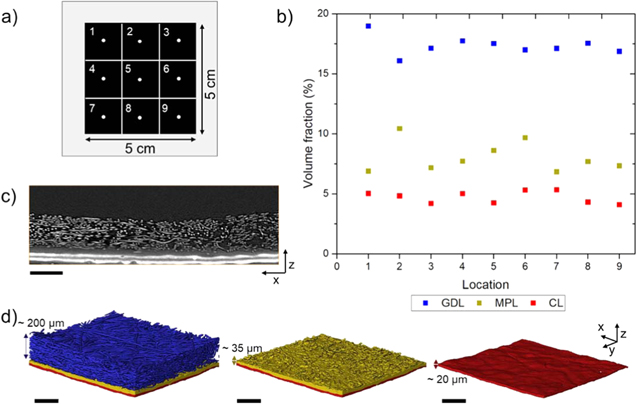Thermo Fisher Scientific › Electron Microscopy › Electron Microscopes › 3D Visualization, Analysis and EM Software › Use Case Gallery

With the growing use of X-ray computed tomography (X-ray CT) datasets for modelling of transport properties, comes the need to define the representative elementary volume (REV) if considering three dimensions or the representative elementary area (REA) if considering two dimensions. The resolution used for imaging must be suited to the features of interest in the sample and the region-of-interest must be sufficiently large to capture key information. Polymer electrolyte fuel cells have a hierarchical structure, with materials spanning multiple length scales. The work presented here examines the nature of the REA throughout a 25 cm2 membrane electrode assembly (MEA), focusing specifically on the micron length scale. Studies were carried out to investigate key structural (volume fraction, layer and penetration thickness, pore diameters) and transport (effective diffusivity) properties. Furthermore, the limiting current density of the nine regions was modelled. Stochastic heterogeneity throughout the sample results in local variations throughout. Finally, effects of resolution were probed by imaging using a range of optical magnifications (4× and 20×). The correlated and competing effects of voxel resolution and sampling size were found to cause difficulties where loss of clarity in the boundaries between phases occurs with larger imaging volumes.
Avizo Software is used to visualize and process the X-ray computed tomography (X-ray CT) data. A range of segmentation techniques were used, including thresholding and manual segmentation with local adaptive thresholding techniques. Volume fractions of each phase were calculated using the “Volume Fraction” module in Avizo Software, by calculating the fraction of voxels assigned to each phase as a percentage of the total number of voxels in the volume.
For Research Use Only. Not for use in diagnostic procedures.